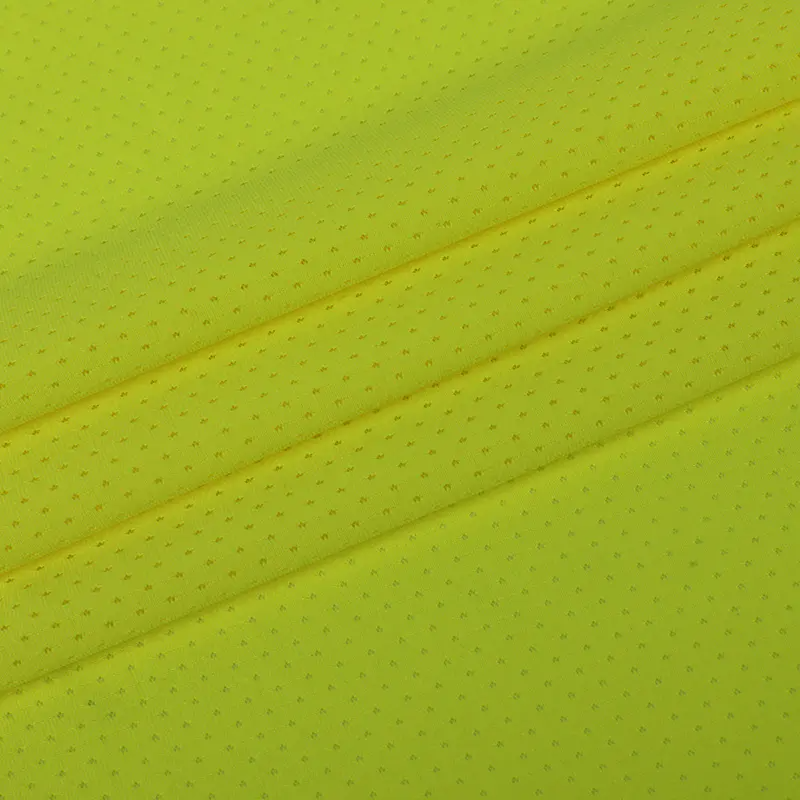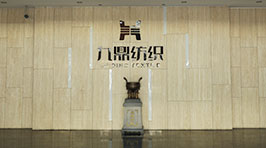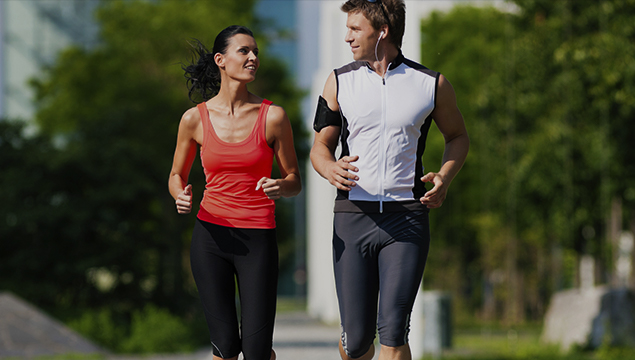
The perspiration performance of polyester fabric and its application in sportswear
1. Perspiration mechanism of polyester fabric
The core of the perspiration mechanism lies in moisture absorption and moisture dissipation. The hygroscopicity of polyester fiber itself is poor, which is mainly determined by hydrophobicity (repellency to water). Sweat is not directly absorbed by polyester fiber, but is quickly pushed to the surface of the fabric through surface tension and capillary action. Polyester fabric does not retain sweat in this process, and sweat is easily guided to the outside of the fabric and evaporates quickly.
Specifically, when the athlete sweats, the sweat first contacts the surface of the clothing. Due to the hydrophobicity of polyester fiber, sweat cannot be absorbed by the fiber itself, but extends along the surface of the fiber to the entire surface of the clothing. In this process, sweat is not retained in the fabric, but is quickly discharged and disappears through evaporation in the air. This mechanism allows athletes wearing polyester sportswear to maintain a dry feeling, and even during intense exercise, sweat can be quickly discharged from the body, avoiding moisture accumulation and discomfort.
2. The perspiration-wicking effect of polyester fabrics
The perspiration-wicking effect of polyester fabrics is very significant in sportswear, especially in high-intensity sports. If sweat is retained on the surface of the skin, it will not only make people feel uncomfortable, but may also cause skin irritation or other health problems. Polyester fabrics effectively avoid this through their excellent moisture-wicking properties.
Rapid moisture conduction: The surface of polyester fibers is usually smooth and lacks the ability to absorb moisture, which allows sweat to quickly spread and discharge along the fiber surface. Compared with other fabrics, polyester can effectively reduce the retention time of sweat, enhance breathability, ensure that sweat can evaporate in a short time, and keep the skin dry.
Avoid dampness: Traditional cotton or some synthetic fibers have certain deficiencies in perspiration performance. After sweat is absorbed into the fiber, it often cannot evaporate for a long time, making the clothes wet and heavy, and the wearer will feel uncomfortable. Due to its hydrophobicity and low hygroscopicity, polyester fabrics make it difficult for clothes to become heavy due to sweat accumulation, and they maintain a lighter and more comfortable feeling when worn.
Enhanced breathability: During high-intensity exercise, the body temperature will rise rapidly, increasing the production of sweat. The perspiration performance of polyester fabrics depends not only on the structure of the material itself, but also on the weaving method of the fabric and the arrangement of the fibers. Through special weaving technology, polyester fabrics can provide better breathability, promote sweat evaporation and air circulation, and further improve the perspiration effect.
3. Technology to improve the perspiration performance of polyester fabrics
Although polyester fabrics perform well in perspiration, with the diversification of demand for sportswear, many brands and manufacturers continue to innovate and use a variety of technologies to improve the perspiration performance of polyester fabrics. The following are several common technologies:
Microporous fiber technology: Some polyester fabrics use microporous technology, that is, creating tiny pores inside or on the surface of the fiber to increase the breathability of the fabric and the speed of moisture extraction. Micropores can effectively improve the air circulation of the fabric, allowing sweat and heat to be discharged from the body more quickly, thereby more effectively keeping the wearer dry.
Coating technology: In order to improve the perspiration performance of polyester fabrics, some sports brands apply special coatings to polyester fabrics, usually by coating them with a layer of hydrophobic substances. This coating can accelerate the discharge of sweat and reduce the retention of sweat in the fabric, thereby improving the perspiration efficiency of the fabric.
Fiber composite technology: Some polyester fabrics use composite fiber technology, combined with other functional materials such as spandex (Lycra) or polyester (Repreve). This blended material can enhance the elasticity of the fabric while improving its perspiration and breathability. By fusing different fibers, sportswear can provide better moisture discharge and temperature regulation while maintaining flexibility and comfort.
Antibacterial technology: During perspiration, bacteria on the skin may come into contact with sweat, resulting in the generation of bad odors. Some polyester fabrics effectively avoid bacterial growth and odor generation by adding antibacterial technology, further improving the comfort and freshness of sportswear.
4. Comparison with other fabrics
The perspiration performance of polyester fabrics occupies an important position in sportswear, but compared with other fabrics such as cotton, nylon, spandex, etc., polyester fabrics also have obvious advantages and disadvantages.
Comparison with cotton fabrics: Cotton fabrics have very good moisture absorption and can quickly absorb sweat from the skin surface. Cotton fabrics have poor perspiration wicking properties, and the absorbed sweat will be retained in the fibers, causing the clothing to become wet and heavy, making the wearer uncomfortable during strenuous exercise. Although cotton fabrics are comfortable, they are not suitable for high-intensity exercise.
Comparison with nylon fabrics: Nylon fabrics are similar to polyester fabrics in terms of moisture absorption and breathability, but polyester fabrics generally have better quick-drying and moisture wicking properties. Nylon fabrics are relatively heavy and are not as suitable as polyester fabrics for perspiration needs during long-term strenuous exercise.
Comparison with spandex (Lycra): Spandex fabrics have very good elasticity and comfort, but their perspiration wicking properties are generally not as good as polyester. Spandex has high moisture absorption and easily absorbs sweat into the fibers, but its perspiration wicking efficiency is low, which easily leads to wet and heavy clothing.












 中文简体
中文简体 English
English Español
Español русский
русский













